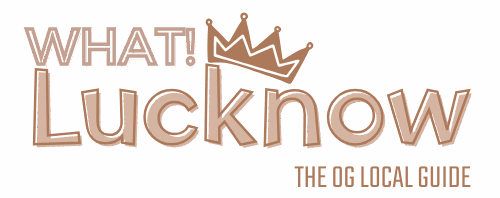The winter air in Lucknow carries something special during the last weeks of November and early December. Streets come alive with music, the aroma of kebabs fills the corners, and artisans from across India gather to showcase their crafts. This is Lucknow Mahotsav – a festival that transforms the city into a cultural wonderland.
Find latest updates here: Get Real Time Updates About Lucknow
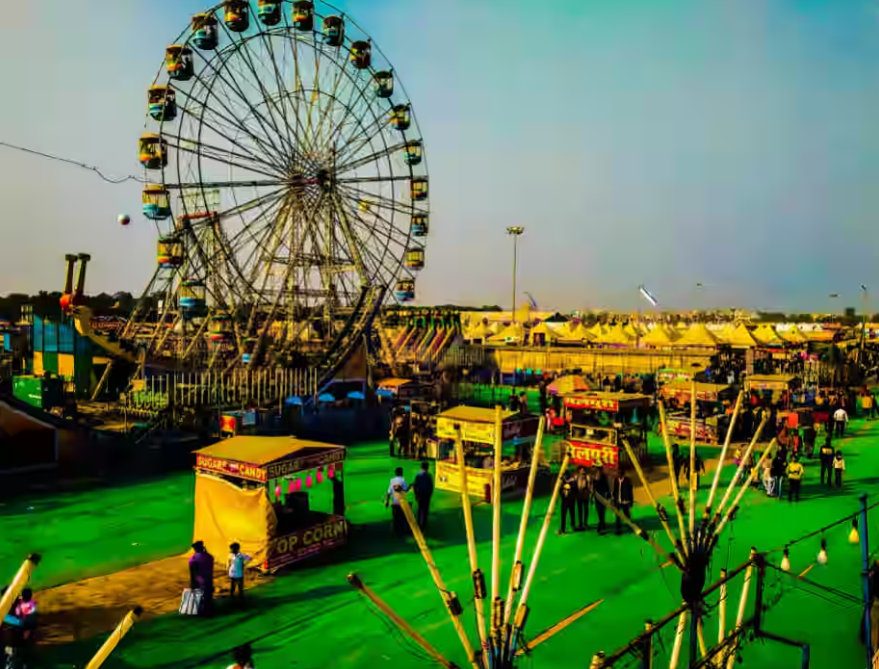
What Makes Lucknow Mahotsav Festival Special
Lucknow Mahotsav celebrates the rich Nawabi heritage of Uttar Pradesh’s capital city. Started in the 1990s, this annual extravaganza brings together art, music, dance, food, and handicrafts under one magnificent umbrella. The festival takes place at various venues across the city, with the main events centered around iconic locations like Gomti Riverfront and the sprawling lawns of historic sites.
The celebration typically runs for 10 days, packed with performances, exhibitions, and cultural programs that showcase both traditional and contemporary art forms. Think of it as Lucknow’s way of opening its doors wide and inviting everyone to experience the city’s soul.
When Does It Happen?
The festival usually kicks off in late November and runs through early December. In 2025, Lucknow Mahotsav will begin on November 26, though organizers announce official dates closer to the event. The timing aligns with pleasant winter weather – perfect for evening strolls through craft bazaars and outdoor performances.
Every year, the government of Uttar Pradesh, along with tourism departments and cultural organizations, coordinates the dates. The festival has become such a fixture in Lucknow’s calendar that hotels book up months in advance, and the city buzzes with anticipation as November approaches.
The Daily Experience
Day 1: Grand Opening
The inaugural evening sets the tone with a spectacular ceremony. Cultural performances featuring Kathak dancers and classical musicians take center stage. Local dignitaries and celebrities often attend, but the real stars are the artists who’ve traveled from distant corners to participate.
Days 2-3: Craft Bazaar Heaven
These days see the craft melas (fairs) hitting their stride. Stalls display Chikankari embroidery – Lucknow’s signature craft – alongside pottery from Khurja, wooden toys from Varanasi, and metalwork from Moradabad. Artisans demonstrate their techniques, letting visitors watch magic happen in real-time.
Days 4-5: Musical Nights
Ghazal singers, qawwali groups, and classical musicians dominate these evenings. The performances often stretch late into the night, with audiences sitting on carpets under strings of lights, completely mesmerized. Folk music from rural Uttar Pradesh also finds its place, creating a beautiful mix of sophistication and rustic charm.
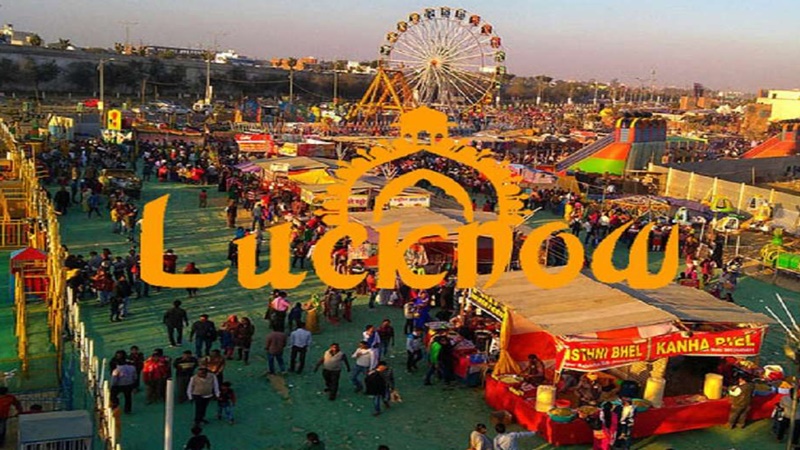
Days 6-7: Dance and Drama
Kathak performances take center stage, but you’ll also catch Bharatanatyam, Odissi, and contemporary dance forms. Theatre groups perform plays in Hindi and Urdu, many telling stories from Lucknow’s glorious past. Street theatre and nukkad natak add spontaneity to structured programs.
Days 8-9: Food Festival Peak
While food stalls operate throughout, these days bring special culinary events. Master chefs conduct cooking demonstrations of authentic Awadhi dishes. The galouti kebabs, tunday kababi, biryani, and kulfi competitions draw massive crowds. Evening food walks become the highlight, with people sampling dozens of delicacies.
Day 10: Grand Finale
The closing ceremony pulls out all stops. A mega cultural program features the festival’s best performers returning for encore presentations. Fireworks often light up the Gomti River, creating a spectacular backdrop. Awards honor outstanding artisans and performers, and organizers already start teasing plans for next year.
Beyond the Main Events
Throughout these 10 days, parallel activities run simultaneously. Heritage walks take people through old Lucknow’s narrow lanes. Photography exhibitions capture the city’s changing face. Literature meets bring together writers and poets. Film screenings showcase regional cinema. Sports tournaments engage younger crowds.
The festival creates temporary employment for hundreds of locals who work as guides, vendors, and support staff. Hotels, restaurants, and transportation services see a significant boost, making the event crucial for the city’s economy.
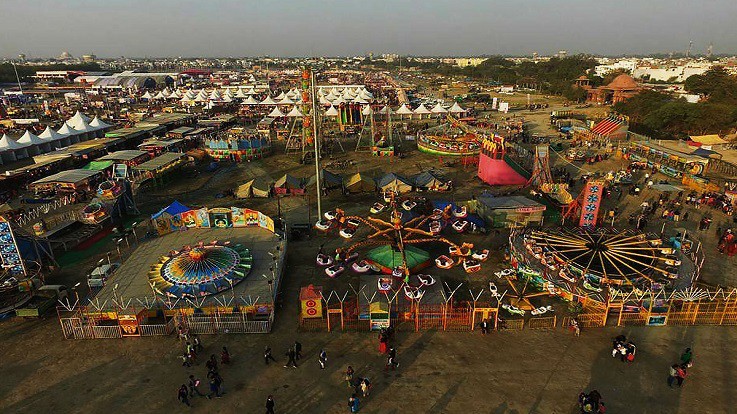
Cultural Significance
Lucknow Mahotsav does more than entertain. It preserves dying art forms by giving artisans a platform and income opportunity. Young people discover traditional crafts they might otherwise never encounter. The festival bridges generations, with grandparents taking grandchildren to see the same puppet shows and magic acts they enjoyed decades ago.
The event also positions Lucknow as a tourism destination. Visitors from Delhi, Mumbai, and international locations mark their calendars for this festival, discovering that Lucknow offers much more than just a stopover on the way to other cities.
Planning Your Visit
The festival venues spread across the city, but free shuttle services usually connect major points. Most events have free entry, though some premium performances might require tickets. The craft bazaars accept both cash and digital payments, with prices ranging from budget-friendly to premium collectibles.
Weather during this period hovers around 10-20°C, so light woolens work perfectly. The city gets crowded, particularly on weekends, so booking accommodation early helps. Local guides and tour operators offer special Mahotsav packages that include heritage walks, food tours, and curated experiences.
Frequently Asked Questions
What’s the best time to visit during the festival?
Evenings between 6 PM and 10 PM offer the best experience. The weather cools down, performances begin, and the entire atmosphere becomes electric. Weekdays see smaller crowds than weekends, making them ideal for leisurely shopping at craft stalls.
Can I buy authentic Chikankari directly from artisans?
Absolutely. The craft bazaar features artisans selling directly to customers, cutting out middlemen. You can watch them work, learn about the craft, and negotiate prices. Many artisans provide certificates of authenticity.
Are food stalls safe to eat from?
The organizers conduct regular hygiene checks on all food vendors. That said, stick to busy stalls with high turnover for maximum freshness. Bottled water stays your safest bet for hydration.
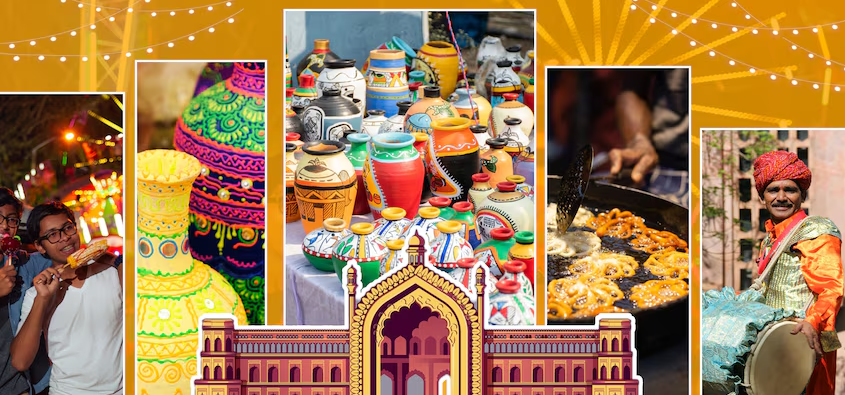
Do I need to book tickets in advance?
Most events operate on a first-come, first-served basis with free entry. However, certain ticketed shows featuring national-level artists might sell out. Check the official website or local tourism office for specific performance details.
What should I not miss?
The Kathak performances, the evening aarti on Gomti Riverfront, and the galouti kebab at the food festival top most people’s must-do lists. Also carve out time for at least one heritage walk through old Lucknow.
Is the festival family-friendly?
Completely. Separate zones cater to children with magic shows, puppet performances, and activity corners. The open-air venues make it easy for families to move around comfortably.
How do I get around the city during the festival?
Auto-rickshaws, app-based cabs, and local buses connect major venues. The festival organizers usually run free shuttle buses between main locations. Walking between nearby venues offers the best way to soak in the festive atmosphere.
Can international tourists participate?
Of course! The festival welcomes visitors from around the globe. English signboards and guides make navigation easy. Many international tourists specifically plan their India trips around this festival.
What’s the shopping like?
Exceptional. Prices at the craft bazaar often beat regular retail stores because you’re buying directly from makers. Bargaining is expected and part of the fun. Carry extra bags – you’ll likely buy more than planned.
Does rain affect the festival?
While November-December typically stays dry in Lucknow, light winter drizzles occasionally occur. Most major venues have covered areas or backup indoor spaces. The show goes on regardless of weather.
The magic of Lucknow Mahotsav lies in how it turns an entire city into a living, breathing celebration of culture. For 10 days each year, the past and present merge on streets and stages, creating memories that linger long after the last performance ends and the final food stall packs up.
More Posts:
